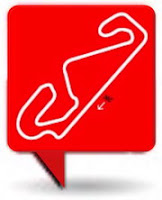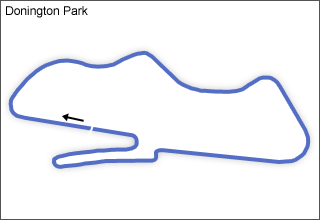Race 1: Losail International Circuit, Qatar
 Losail International Circuit - Commercial Bank Grand Prix of Qatar
Losail International Circuit - Commercial Bank Grand Prix of Qatar Race Date: April 10-12, 2009
Race Date: April 10-12, 2009- Pole Position: Left
- Track Length: 5,380 m
- Track Width: 12 m
- Longest Straightaway: 1,068 m
- Left Turns: 6
- Right Turns: 10
- Year Track Opened/Upgraded: 2003
- Track Location: Doha, Qatar
- Event Promoter: EC1 Ventures Ltd.
- Event Website: www.qatar-grandprix.com
- 1st Place: Casey Stoner (Ducati)
This incredible facility was opened in 2004 year and staged the very first Qatar Grand Prix. Around $58 million was spent building the state of the art 5.300km circuit in the desert. The facilities were superb while the long circuit provided a variety of bends and a start and finish straight over 1000 meters long.
The heat was intense throughout the race weekend but fears that sand would blow onto the surface were largely unfounded.
The Losail circuit is situated in the desert and this means that the climatic condition is a major issue. Track temperature was more 40 degrees at Sepang and it’ll probably be around the same at Losail, up in the 50s. As in Malaysia the bikes must be specially prepared to increase the refrigeration efficiency of the engine and radiators with larger capacities than normal will be fitted again.
The track combines a long start and finish straight of 1.068m. with various type of corners but it is very symmetric and not any of them need a lot of throttle. The base setting of the bike will be similar to that used at Sepang, an adequate compromise between the brakes and suspension settings to be able to give stability under braking and also to maintain grip throughout the other parts of the circuit.
Grip at Losail is a topic matter speaking about tyres’ performances. The layout of the track isn’t particular hard on tyres. The major concern is the sand blown onto the surface which dramatically reduces the grip. Unfortunately the track doesn’t get used a great deal and the sand has not many chances to get cleared away. If it is sandy, you do everything you can to find grip, but if you use really soft tyres, the sand wears them out quickly, whereas if you use hard tyres you have no grip, which makes tyre choice a tricky task.
 Travel information
Travel informationThe route to the circuit from the airport: drive through Al-Matar St. Take right on Toyota Tower then keep going through C-Ring Road, keep driving along Cornishe Road all the way until reaching the Sheraton Hotel, take a left towards City Centre, drive to AL-Wahda St. take a Right to Istiqlal St. Keep straight then take left going to Doha Golf Club. Take a right on the roundabout going north to Al-Khor Highway till you get to Losail International Racetrack.
Qatar Motor and Motorcycle Federation
PO Box 8708
Doha
Qatar
Tel + 974 437 9707
Fax + 974 437 9761
e-mail: info@qmmf.com






















































